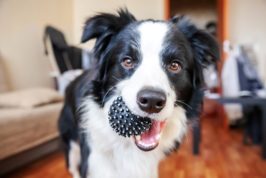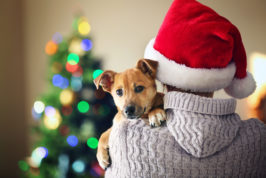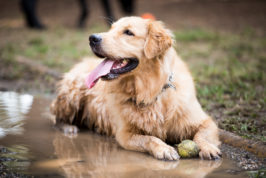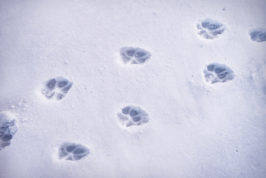At the point where you walk in the door with your new puppy, you’ve probably done some research. You probably know a lot of the dos and don’ts and have a beautiful picture in your mind of what owning a puppy is going to be like. You might be imagining cosy cuddles, days playing on the beach and long walks in the park, as well as all the other new experiences your little one will have.
Of course, you know there are bound to be mishaps. You might be expecting a few accidents on the carpet and a few sleepless nights as your perfect pup settles in. You might also be expecting a few hairy moments while you start learning recall together. No matter how prepared you are, your new puppy can cause more havoc, noise, damage and embarrassment than you expected. So, what if you have a naughty puppy? Is it just normal puppy behaviour, or do you need to do something about it?
Download your FREE veterinary puppy health checklist
What can cause a puppy to misbehave?

It’s important to remember that behaviour that we consider naughty is often just normal behaviour for a puppy. Puppies don’t know right from wrong until they are trained. They are naturally inquisitive and get bored quickly, which could lead to them chewing or damaging furniture and other items. However, rather than doing it to be naughty, they’re really just entertaining themselves and learning their boundaries.
Another behaviour commonly thought of as naughty is barking. Of course, no one wants to be kept awake by their dog barking or to have their dog bark at strangers or other dogs. But for puppies who have recently been rehomed, their environment has changed a lot. They may feel lonely, confused, or unsettled, and they might bark to express those feelings. They might also bark in unfamiliar situations when meeting new dogs or people, which is quite normal for a young puppy.
Toilet training can be stressful for pet parents. After all, no one wants a mess in their home. But it’s essential to be patient and recognise that your puppy isn’t being naughty by peeing or pooping in the house; they just haven’t learned to go outside yet.
How to deal with naughty puppies

When dealing with your ‘naughty’ puppy, try to stay calm and be patient. Keep in mind that they’re still young and learning. It’s understandable to look ahead and imagine that their bad behaviour will last forever. Still, with commitment and the proper training, that’s not the case. Try to avoid dealing with your naughty puppy by punishing them or shouting. This can cause fear and is less likely to be effective than positive reinforcement.
If your pup is a chewer, not only do they risk damaging expensive or sentimental household items, but they also endanger themselves. There are steps you can take to reduce the risk of your pup chewing or causing other damage to your home, furniture, or other property. Firstly, it’s worth puppy-proofing your house. Try to imagine what is accessible to your puppy – you can get down on all fours if you have to! Keep wires, cables, shoes and any other items that could be pulled over or picked up out of reach. You can also work on keeping them stimulated with toys, puzzle feeders, chews (check they’re puppy-safe) and games. This will help use their mental and physical energy so that they feel less inclined to play with the curtains or the rug!
Training and socialisation are vital for puppies and will help combat most unwanted behaviours. Remember to stay positive rather than focusing on punishment. Rewarding good behaviour and ignoring bad behaviour will help your puppy become a well-mannered pooch.
How to train naughty puppies

The key to training a puppy is to keep your expectations realistic and reward small improvements. By using achievable goals, you and your pup will remain focused and feel positive. Gradually changing the goal in stages to become more demanding will help you move towards the end point.
For instance, if you want to train your dog to sit, you should start with them close to you. Make sure you have treats, dry puppy food, or a clicker to use as a reward. First, reward them with a treat, click, or by saying ‘good boy’ (or ‘good girl’) when they give you their attention. Once you have their attention, hold the treat just in front of their nose, then move it upwards in an arc towards the back of their head. They will instinctively follow the treat with their eyes and end up looking upwards. You should also reward them at this point. Finally, use the ‘sit’ command and raise the treat slightly. If you like, you can also point upwards. When they move their bottom towards the floor, even if they don’t quite make contact, reward them. In no time, you’ll be beaming with pride as your pup demonstrates a perfect sit!
If you want to train your pup not to bark, you should make a mental note of the situations that cause them to bark. Perhaps it’s the evenings when you’ve all gone to bed. Or maybe it’s when the postman arrives. Whatever the trigger, try to provide them with an activity or distraction at this time. This could be a puppy-safe chew, a puzzle feeder, a game, or a favourite toy. Just before the barking normally starts, have your chosen reward ready. Start by rewarding them when their attention is on the distraction, and they are not barking. Reward them periodically as long as they are not barking. If they bark, don’t shout or make a fuss, just ignore it and try to get their attention back. Once their attention is on you or they are absorbed in their activity again, start rewarding them. Over time you should be able to elongate the time between rewards.
How to socialise a puppy
It’s essential to expose your new puppy to as many different places, people, animals and experiences as possible while they are young, but don’t do it all at once! When showing your dog new things, focus on one new aspect at a time so that they don’t get overwhelmed. Of course, it’s impossible to prevent your puppy from meeting new dogs from day to day. However, you should try to avoid busy areas for daily walks until your pup is feeling more confident. It’s a great idea to organise meeting a new person or a new dog in a familiar environment like your home first so that your pup feels as secure and comfortable as possible.
If you find your puppy isn’t keen on other dogs or new people, you can try to desensitise them slowly. The process is similar to any positive reinforcement training and again relies on rewards like praise, treats, or a clicker. Start with your puppy in a large open space, and make sure they feel secure and that you have their attention. Get the person or someone with a dog on a lead to stand outside of view and then gradually come closer and closer. You should try to keep your pup’s attention throughout and reward them consistently when they don’t react. This type of desensitisation can also be used for noise phobias and other behaviour issues.
Frequently asked questions
Puppies are rarely naughty. They’re just young, full of energy and untrained! Puppies sometimes get more active in the evenings, especially if they haven’t had much exercise, attention, or stimulation throughout the day. If you want your evenings to be more chilled, you could try making sure your pup gets regular walks and playtime throughout the day. If they still seem to have lots of energy left for mischief in the evening hours, why not find them a puzzle feeder, snuffle mat, or another activity toy to keep them occupied?
If you watch your puppy, you’ll probably find that they naturally alternate between rowdy, active moments and periods of rest throughout the day. As well as becoming more active in the evening if they’ve had a lot of downtime during the day, puppies can also become overtired after a busy day. Being overtired can make their behaviour more challenging, and they can become noisier, more active and naughtier. So, it’s essential to make sure your pup has plenty of opportunities for catnaps throughout the day so that you don’t pay the price in the evening.
Sometimes, it really can seem like your puppy is naughty. Sometimes being a puppy parent is exhausting, and it only takes a few bad days to have you wondering whether a puppy was a good idea after all. However, if you commit to providing your puppy with regular mental stimulation, exercise and opportunities to rest, the naughty phase will soon pass. Once you start training and socialisation, you’ll be well on your way to living in harmony with your furry bundle of joy.
Just like human babies, puppies can become overtired. This can lead to them acting up, barking and even chewing or being destructive. To combat this, you should make sure they have ample time to rest throughout the day. Try to encourage short periods of play and exercise, followed by quiet time where your pup can calm down, relax and rest.
Puppies love to mouth people’s hands, feet and anything else they can find. This mouthing phase occurs in all puppies and is an important developmental phase. Unless you actively encourage them to mouth, by playing games where they attack your hands or feet, they should grow out of it. If your puppy starts to mouth or nip your hands or feet, stop playing with them immediately and turn your back to them. Sometimes, it’s necessary to sit on your hands or tuck your feet under you so your pup can’t reach them. Once your pup is calm and has stopped mouthing, you can engage in playtime again.
So, is it normal for puppies to be naughty?
It’s very normal for puppies to bark, chew things, mouth your hands and poop on the floor. It’s not through naughtiness, though, and with the proper training and socialisation, as well as a good daily routine, they’ll soon learn the ropes. When it comes to puppies, patience and positivity are key, but if you think you need some extra help, you can always ask your veterinarian for advice.




